Interior design is more than just making spaces look good. It is also about creating spaces that work well for the people who use them. It is a complex and creative process that requires planning, skill, and vision. Whether you are a client who dreams of a new space or a designer who strives to make it happen, you need to know how the interior design process works from both sides. In this blog post, we will take you on a journey through the steps of the design process, the vital elements of interior design, the hottest trends in the field, and the role of inspiration and references in the design process.
If you have a passion for interior design, you probably have some curiosity as well. How do you begin your project or collaborate with a designer? What are the main aspects and current trends of interior design? How do you find inspiration and references? In this blog post, we will address these questions and more. We will illustrate the interior design process from the client’s and the designer’s perspective, the core elements of interior design, the newest trends in the field, and the significance of inspiration and references in the design process. Whether you are a client or a designer, you will learn useful tips and insights here.
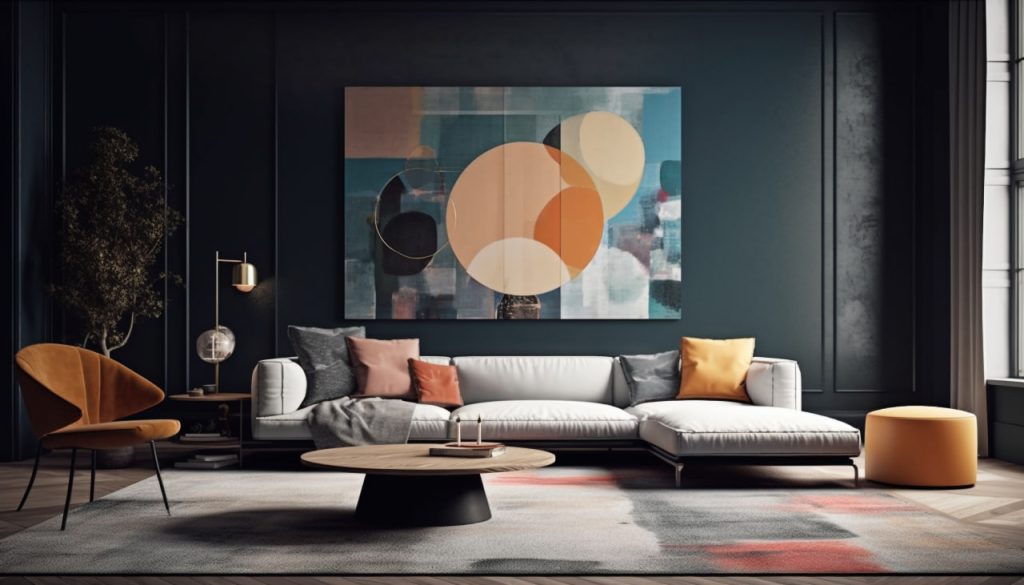
Part I: The Interior Design Process
You want to transform your home or office. You need an interior designer. But how do they work? How do they turn your vision into reality? In this part, we reveal the secrets of the interior design process. Explore the collaborative process between designers and clients, from the first meeting to the final touches. Our all-encompassing approach involves five unique phases, utilizing cutting-edge methods and the knowledge of experienced designers. Furthermore, we offer valuable advice on creating a successful design brief, unleashing your creativity, and setting clear goals and outcomes for a successful project.
Step 1: The Role of a Design Brief in Interior Design Process
The design brief is a crucial document that delineates the project’s scope, objectives, budget, timeline, and expectations. Typically, the client drafts it, but the designer can also collaborate on it during the initial consultation. The design brief is significant because it acts as a roadmap and a point of reference for both parties during the project. It aids in defining the client’s vision, requirements, and preferences, as well as the designer’s roles and responsibilities.
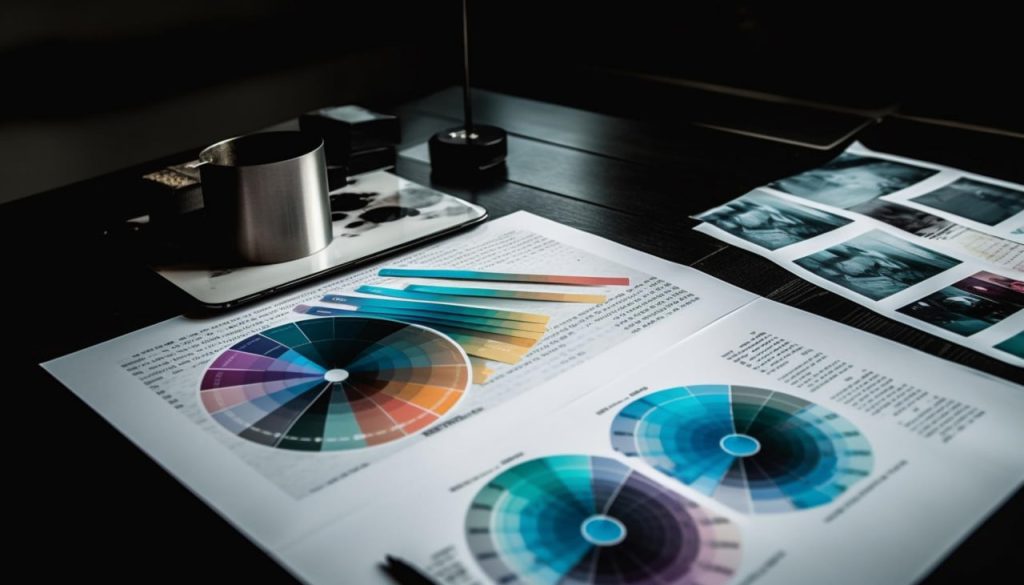
Interior Design for a Specific Purpose and Function:
The project aims to create a space that serves a specific purpose and function. It is important to understand the needs and requirements of the users and stakeholders involved. By identifying the current challenges and opportunities, we can develop a solution that addresses these issues effectively.
The desired outcomes and benefits of the project need to be clearly defined. These goals will serve as a benchmark to measure the success of the project. By setting specific objectives, we can ensure that the project meets the expectations and delivers the intended results.
Designing the Space: How to Define and Plan the Project
The size, layout, and features of the space are crucial aspects to consider. It is important to determine the technical and functional requirements to ensure that the space meets the necessary standards. Additionally, understanding the existing and desired furniture, fixtures, and equipment will help in creating a comprehensive plan for the project.
Managing the Resources: How to Budget and Timeline the Project
The available resources and constraints play a significant role in determining the budget and timeline of the project. It is essential to allocate the appropriate amount of money and time to ensure the successful completion of the project. Setting milestones and deadlines will help in tracking progress and ensuring timely delivery.
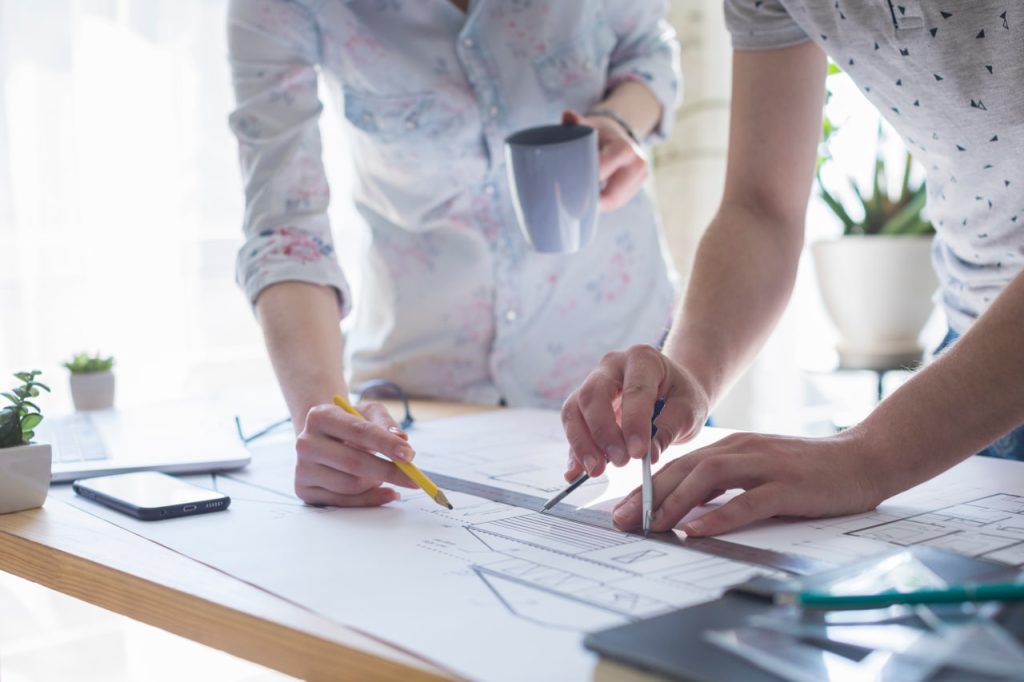
Reflecting the Vision: How to Understand and Meet the Client’s Expectations
Understanding the aesthetic and emotional aspects of the project is vital to meet the client’s expectations. By identifying the client’s preferred colors, textures, materials, and patterns, we can create a design that resonates with their vision. Exploring the client’s inspirations and references will further enhance the project’s overall outcome.
The format of a design brief can vary, including options like a word document, a presentation, or a questionnaire. The crucial aspect is to ensure clarity, conciseness, and comprehensiveness in order to effectively communicate with the designer. Additionally, a design brief can be modified and updated throughout the project, as long as both parties are in agreement with the proposed changes.
Step 2: Unleash Your Creativity
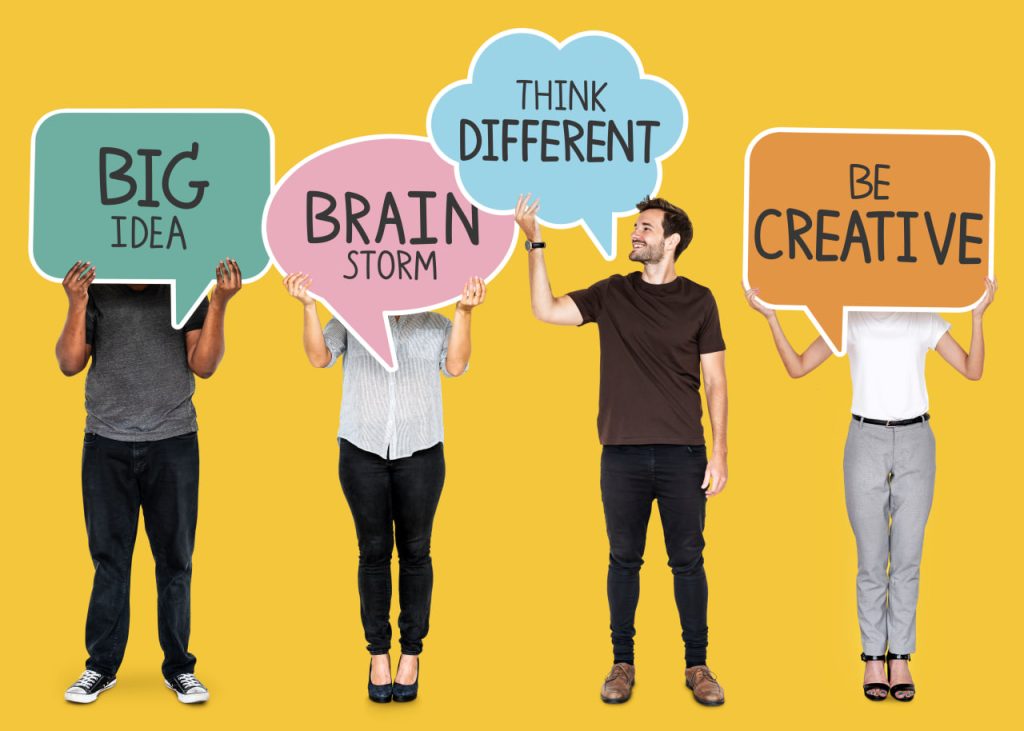
The creative process is where the magic happens. You turn the design brief into a space that works and wows. The creative process can be different for each designer, but it usually has these stages:
- Digging Deeper: The designer conducts thorough research and analysis by reviewing the design brief and delving deeper into the market, users, competitors, and trends. Additionally, the designer scrutinizes the site and context to identify the project’s strengths, weaknesses, opportunities, and threats.
- Ideation and brainstorming: The designer engages in ideation and brainstorming, employing a range of techniques such as sketching, mood boards, mind maps, and storyboards to generate and explore diverse ideas and solutions for the project. Additionally, the designer solicits feedback and input from the client and other stakeholders, and assesses and chooses the most suitable ideas based on the project’s criteria and limitations.
- Brainstorming and Exploring:The designer develops and refines the selected ideas into a coherent and cohesive design concept, using tools such as floor plans, elevations, sections, renderings, and models. The designer also tests and validates the design concept with the client and other stakeholders, and makes adjustments and improvements as needed.
Various formats can be used to write a design brief, including a word document, a presentation, or a questionnaire. The crucial aspect is to ensure that it is easily understandable, concise, and covers all necessary information, while effectively conveying it to the designer. Additionally, a design brief can be modified and amended throughout the project’s development, as long as both parties reach an agreement on the proposed alterations.
Step 3: Bring Your Interior Design to Life
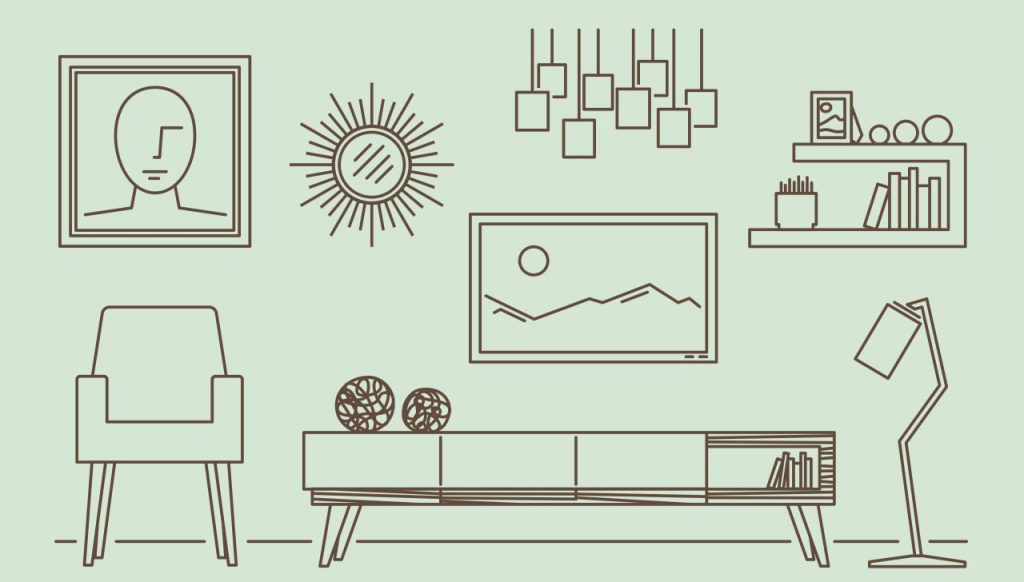
During the documentation and specification phase, the design concept is transformed into a tangible reality. This phase involves the creation of various elements.
● Construction drawings: They show how to build and install the space. They have floor plans, elevations, sections, details, and schedules. The contractors, the builders, and the installers use them.
● FF&E drawings: They show what and where the furniture, fixtures, and equipment are. They have furniture plans, lighting plans, electrical plans, and plumbing plans. The suppliers, the manufacturers, and the installers use them.
● Finishes and materials specifications: They show what the space looks and feels like. They have paint colors, fabrics, wallpapers, tiles, and carpets. The suppliers, the manufacturers, and the installers use them.
● Cost estimates and budgets: They show how much the project costs. They have labor costs, material costs, and contingency costs. The client, the designer, and the contractors use them. The documentation and specification phase is a vital and careful phase. As a designer, it is your responsibility to ensure that the design concept is both feasible and compliant with legal requirements. This involves adhering to codes, standards, and regulations, as well as collaborating with clients, contractors, suppliers, and authorities. Your ultimate goal is to ensure that the project progresses smoothly and efficiently.
Step 4: Make Your Space a Reality
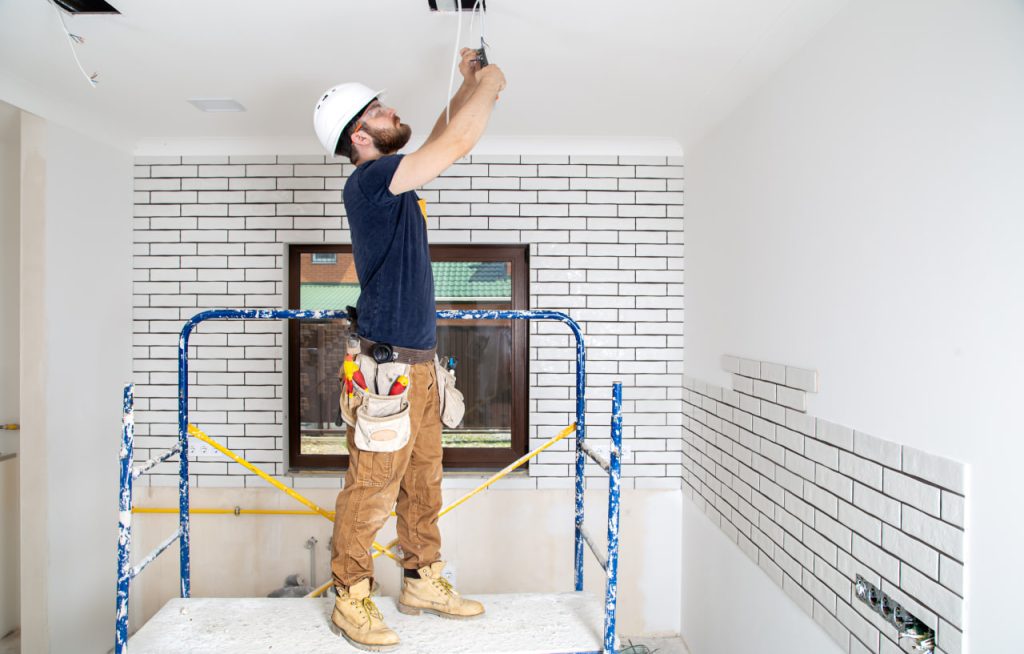
As you progress through the procurement and construction phase, you enliven the space by undertaking a multitude of tasks and activities:
● Ordering and purchasing: You buy the FF&E from the suppliers and manufacturers. Adhering to the specified requirements and financial constraints is a priority. Additionally, you diligently verify and acknowledge the successful delivery and receipt of the FF&E. Furthermore, you adeptly address and resolve any potential challenges or discrepancies that may arise.
● Construction and installation: As part of your role, you collaborate with contractors, builders, and installers. Your responsibilities include closely adhering to construction drawings and schedules, as well as monitoring and evaluating the quality and progress of the work. Additionally, you are adept at resolving any issues or accommodating changes that may arise.
● Testing and commissioning: The space undergoes thorough testing and commissioning, ensuring that the lighting, electrical, plumbing, and HVAC systems are all in proper working order. Additionally, you prioritize safety and sustainability by ensuring the space meets all relevant standards and regulations. During the procurement and construction phase, you tackle the demanding and challenging aspects of the project, working closely with the client, contractors, suppliers, and authorities. Your ultimate goal is to ensure the project is completed within the designated timeframe and budget constraints.
Step 5: Impress Your Client with Installation and Styling
Throughout the installation and styling phase, you have the chance to make a lasting impression on the client. This phase encompasses a range of tasks, including:
● Furniture and accessories placement: You put and move the furniture and accessories. You follow the furniture plans and the design concept. You also tweak and fine-tune them to create a balance and harmony.
●Decoration and art installation: You arrange and display the decoration and art pieces on the wall. You follow the design concept and the elevation drawings. You also make sure they are aligned and leveled to create a focal point and a flair.
● Window treatments and bedding installation: You install and dress the window treatments and bedding. You follow the specifications and the design concept. You also steam and smooth them to create a cozy and comfy vibe.
● Lighting and ambiance adjustment: You adjust and set the lighting and ambiance. You follow the lighting plans and the design concept. You also control and modify the brightness, the color, and the mood of the lighting to create a function and appeal. The installation and styling phase is a rewarding and satisfying phase. Present the ultimate outcome and the metamorphosis, while also receiving feedback and assessment from the client, the designer, and the users. Ensure that the project fulfills the requirements and desires.
Part II: The Elements of Interior Design
Interior design is a multidisciplinary field that aims to enhance the interior of a space, making it more visually appealing and conducive to the well-being of its occupants. By carefully considering and integrating various elements, interior designers create spaces that are both harmonious and functional.
Color in Interior Design
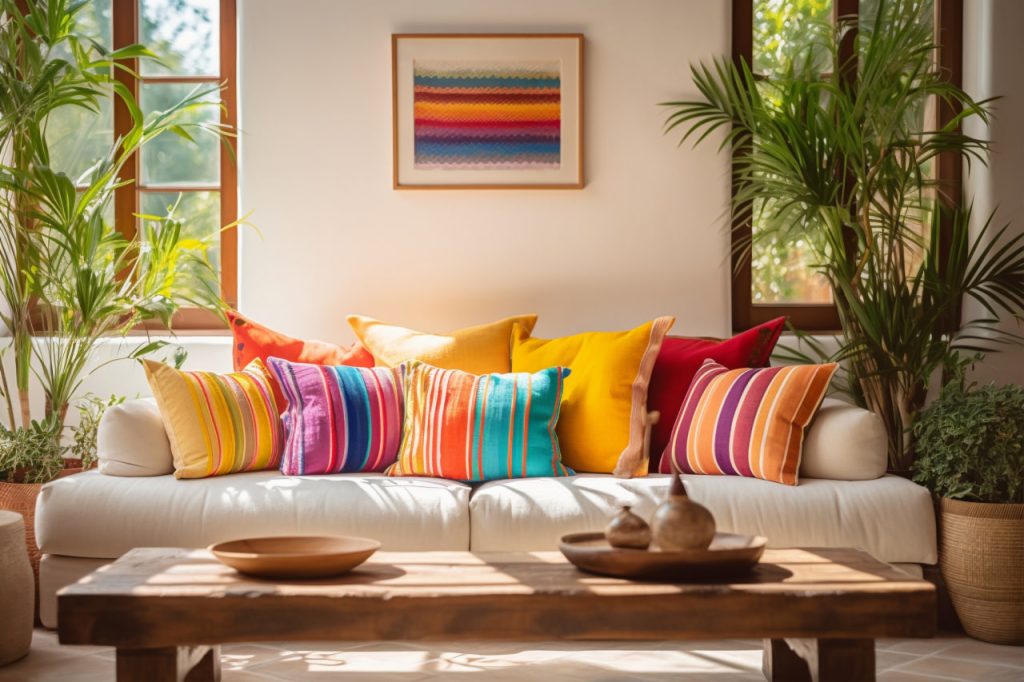
Color is a powerful tool in interior design. It changes the mood, atmosphere, and perception of a space. It also creates contrast, harmony, and balance. You can use color on the walls, floors, ceilings, furniture, accessories, and lighting. Color has three categories: primary, secondary, and tertiary. Primary colors are red, yellow, and blue. Secondary colors are green, orange, and purple. Tertiary colors are mixtures of primary and secondary colors. Color also has hue, saturation, and value. Hue is the name of the color, like red or green. Saturation is how intense or pure the color is, like bright or dull. Value is how light or dark the color is, like light or dark.
You can use color to create different effects in a space. For example, warm colors, like red, orange, and yellow, make a space cozy, energetic, and stimulating. Cool colors, like blue, green, and purple, make a space calm, relaxing, and soothing. Neutral colors, like white, black, gray, and brown, make a space sophisticated, elegant, and versatile.
You can also use color to create a focal point, a visual interest, or a background in a space. For example, a bright color can draw attention to something in a space, like a painting or a fireplace. A muted color can blend with the surroundings and make a space harmonious and continuous, like a beige wall or a cream sofa.
Lighting in Interior Design
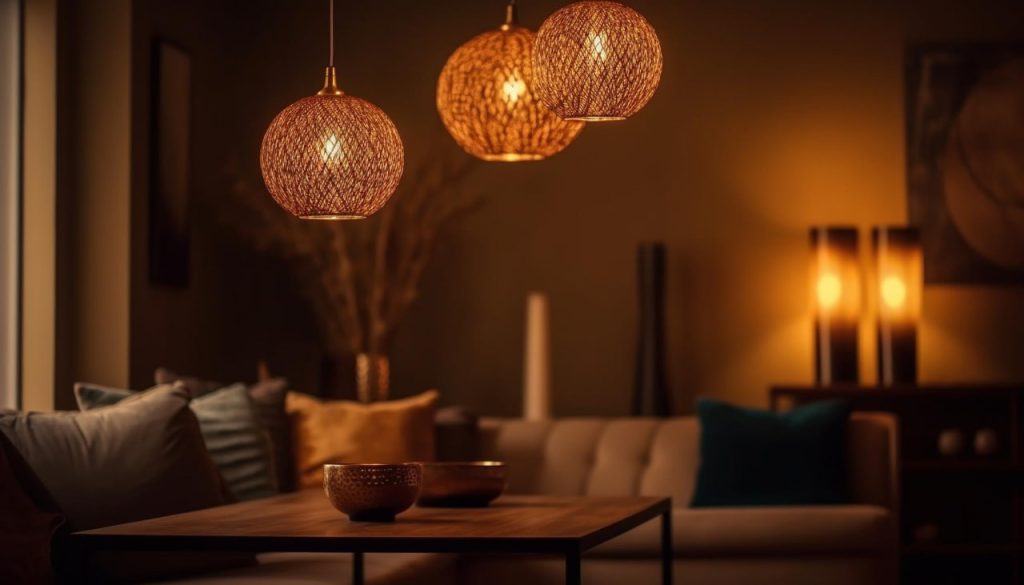
Lighting plays a crucial role in interior design, as it has the ability to enhance various aspects of a space. It can elevate the colors, shapes, textures, and overall mood of a room. Moreover, lighting serves the purpose of providing illumination, functionality, and safety within a space. In terms of categorization, lighting can be classified into three types: natural, artificial, and ambient.
Natural lighting refers to the light that emanates from the sun, moon, or stars. It is influenced by factors such as the time of day, season, and weather conditions. Natural lighting has the ability to create a warm, vibrant, and lively atmosphere.
On the other hand, artificial lighting is generated by man-made sources such as lamps, candles, or chandeliers. It offers the advantage of being adjustable by the user, allowing for a wide range of lighting effects to be achieved. Artificial lighting can contribute to creating a cool, subdued, and cozy ambiance.
Lastly, ambient lighting refers to the general lighting that fills a space and provides a comfortable level of brightness. This type of lighting can be achieved by combining both natural and artificial light sources.
The utilization of lighting can produce various effects within a room. To illustrate, direct lighting can emphasize a particular object or section within a space, like a sculpture or a bookshelf. Indirect lighting can generate a gentle and dispersed radiance in a room, such as a wall sconce or a floor lamp. Task lighting can supply concentrated and sufficient illumination for a specific task or purpose in a space, like a desk lamp or a reading light. Accent lighting can establish a striking and ornamental impact in a space, such as a spotlight or a pendant light.
Furniture in Interior Design
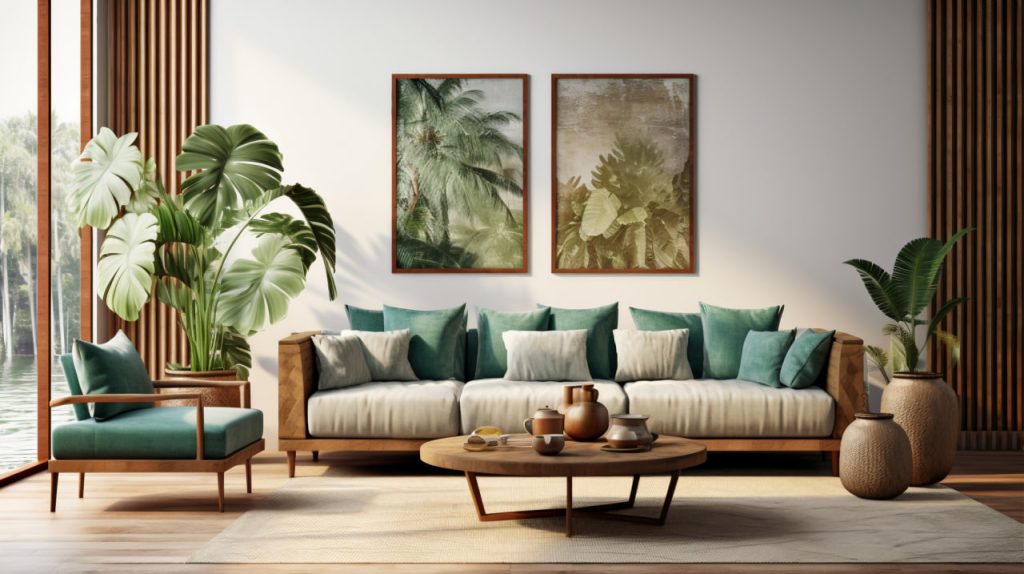
Furniture plays a vital role in interior design, offering both comfort and style to a space while also defining its function, layout, and scale. It can be classified into two types: fixed and movable. Fixed furniture, like cabinets or shelves, provides stability and a sense of permanence, while movable furniture, such as chairs or tables, adds flexibility and adaptability to a room.
The mood of a space can be altered by furniture. Expansive and luxurious feelings can be created by large pieces, while intimacy and coziness can be fostered by small furniture. Minimalism and modernity are embodied by simple designs, while classic elegance is exuded by ornate pieces. Symmetrical arrangements project formality and balance, while asymmetrical furniture sparks informality and dynamism.
Texture in Interior Design
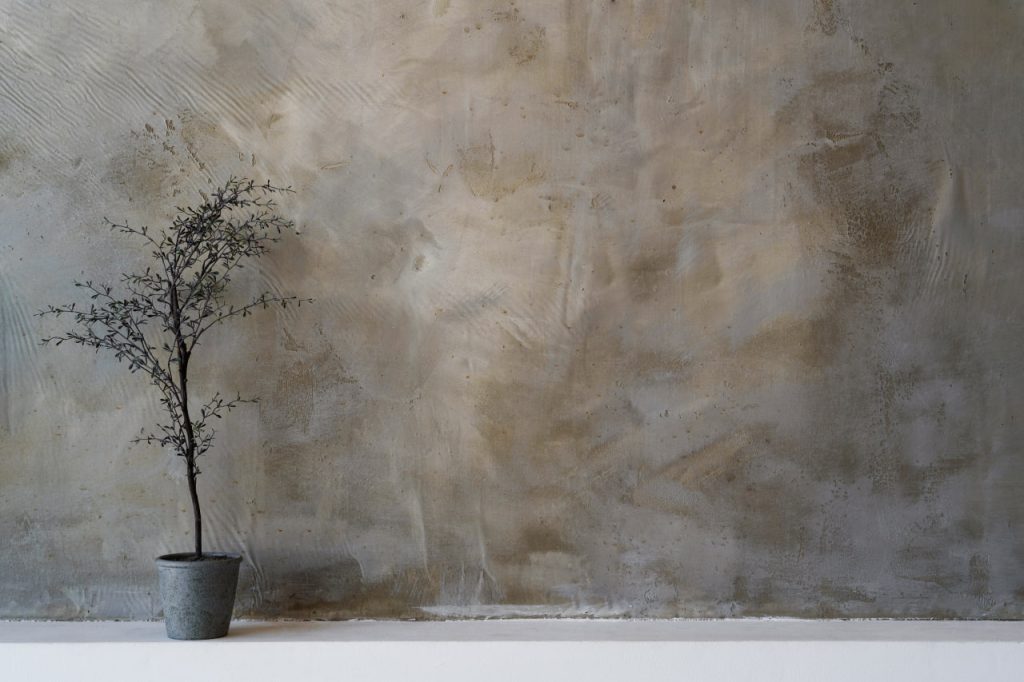
Texture adds depth and dimension to a space. Smooth, rough, soft, or hard surfaces can be perceived by touch or sight. Texture impacts a space’s temperature, sound, and comfort. It can be applied to walls, floors, ceilings, furniture, accessories, and fabrics. Texture comes in two forms: tactile and visual. Tactile, like velvet, leather, or wool, creates a cozy atmosphere. Visual, like wood, stone, or metal, exudes richness and sophistication.
Texture has the ability to produce various effects within a given area. For instance, a smooth texture can result in a sophisticated and refined space. On the other hand, a rough texture can bring about a rustic and organic atmosphere. A soft texture can establish a cozy and tranquil space, while a hard texture can contribute to a robust and long-lasting environment. By incorporating contrasting textures, one can create a vibrant and captivating space. Similarly, complementary textures can foster a balanced and cohesive space.
Enhance your space with various elements of interior design such as color, lighting, furniture, and texture. These components allow you to showcase your personality, style, and taste while creating a visually appealing and practical environment. Feel free to explore different combinations and arrangements to craft a space that is truly one-of-a-kind.
Part III: Investigating the Contemporary Trends in Interior Design
Interior design combines the elements of art and science to create beautiful and functional spaces. The field of interior design is influenced by various factors such as culture, history, technology, and psychology. In this part, we will delve into some of the latest trends that are shaping our living and working spaces in the 21st century.
Biophilic Design
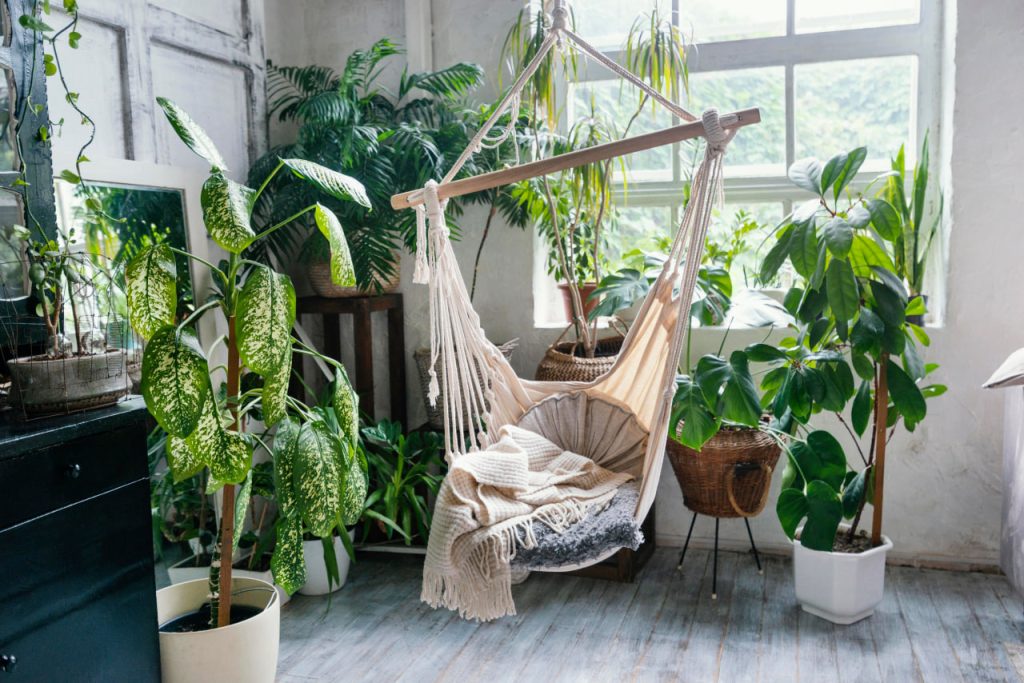
Biophilic design is a visionary approach that aims to establish a deep connection between humans and the natural world, incorporating elements like plants, water, sunlight, and organic materials. Its ultimate goal is to create environments that foster well-being, productivity, and creativity by mitigating stress, uplifting mood, and enhancing air quality. Several illustrative examples of biophilic design are:
- Green walls or vertical gardens: Vertical gardens or green walls are an excellent way to add a natural and vibrant touch to any indoor area. Not only do they provide a stunning backdrop, but they also aid in noise reduction, air purification, and temperature regulation.
- Water features: Incorporating water features like fountains, ponds, or aquariums can transform any indoor setting into a calming and tranquil environment. Not only do they add aesthetic appeal, but they also serve practical purposes such as increasing humidity levels, muffling unwanted noises, and bouncing off natural light.
- Natural materials Nothing beats the feeling of being surrounded by nature, even when you are indoors. Natural materials, such as wood, stone, bamboo, or cork, can bring warmth, texture, and character to any space. They can also make your home more authentic, durable, and eco-friendly. In this part, we will show you some examples of how you can incorporate natural materials into your interior design.
Minimalist Design
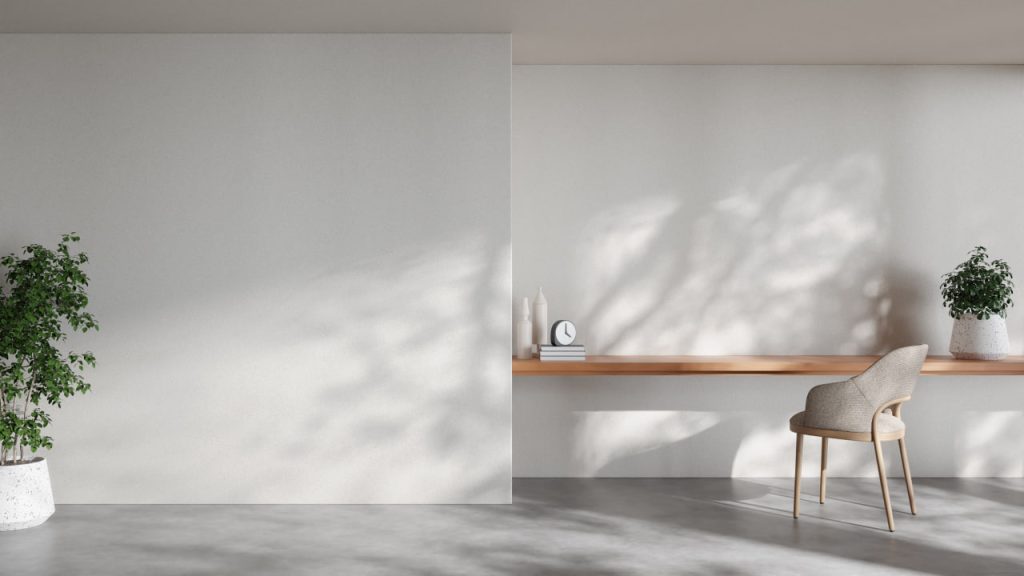
Minimalist design focuses on simplicity and elegance, using only essential elements such as furniture, lighting, and color. It aims to create spacious and functional spaces while minimizing distractions and enhancing focus and productivity. Take a look at a few examples of minimalist design.
- Multipurpose furniture can do more than one thing. It saves space in any space. It can be a sofa bed, a nesting table, or a storage ottoman. It makes the space flexible and adaptable. It suits different needs and tastes.
- Neutral colors:White, black, gray, and beige are examples of neutral colors that create a peaceful and well-balanced atmosphere. They make any space flow, consistent, and elegant.
- Natural light, which can illuminate and brighten any interior space by using windows, skylights, or mirrors. Natural light can also help create a sense of openness, airiness, and freshness.
Smart Design
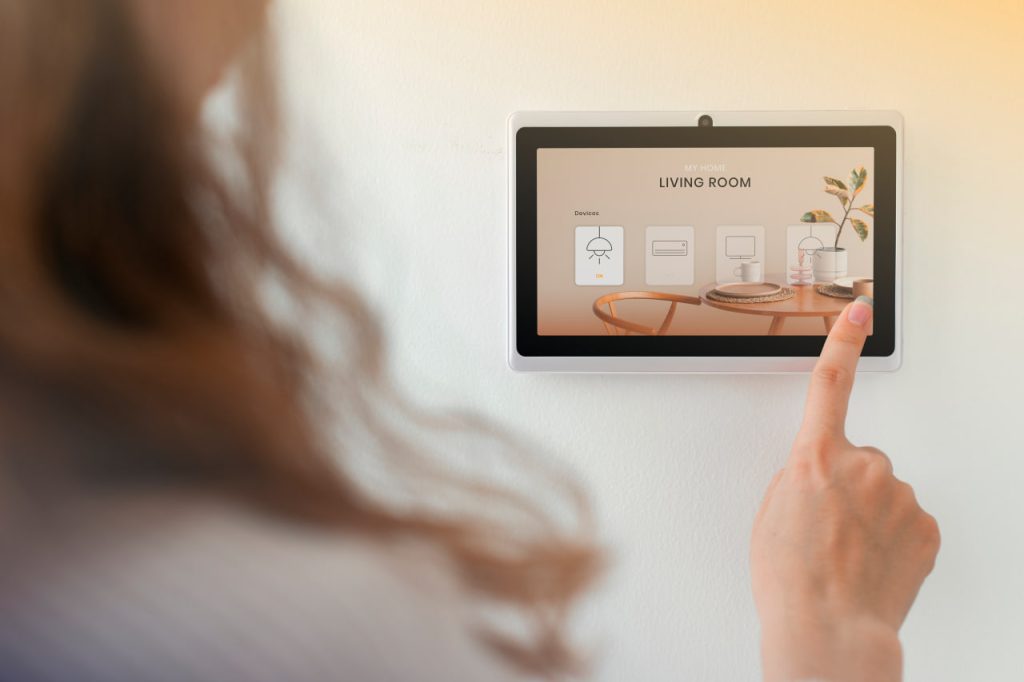
Innovative technology is at the core of smart design. With the help of devices, sensors, and systems, it can automate, optimize, and communicate. From controlling lighting and temperature to ensuring security and entertainment, smart design makes spaces more convenient, comfortable, and customizable. Experience the benefits of enhanced control, comfort, and convenience with these examples of smart design.
- Smart lighting: Smart lighting revolutionizes the lighting in every room by utilizing voice commands, remote control, or a dedicated app. It offers the flexibility to adjust brightness, color, and ambiance, while also promoting energy efficiency, enhancing safety, and creating captivating atmospheres.
- Smart thermostats: which regulate both temperature and humidity levels by utilizing sensors, algorithms, or machine learning techniques. These innovative devices not only help save money but also enhance overall well-being by creating a personalized climate.
- Smart speakers: Smart speakers utilize voice commands to perform various tasks. They rely on voice recognition technology, artificial intelligence, and cloud computing to carry out these actions.
People’s needs, tastes, and lifestyles drive the evolution of interior design. The current trends focus on creating a more organic, uncomplicated, and innovative space. These trends, including biophilic design, minimalist design, and smart design, enhance the well-being and functionality of the users while also promoting sustainability.
Part IV: Unveiling the importance of inspiration and references
Interior designers find inspiration and references from various sources such as nature, art, culture, history, and technology. These sources ignite their creativity, broaden their perspective, and enhance their skills. They provide a wealth of fresh and innovative ideas, concepts, and solutions that assist in every stage of the design process. They aid in discovering and cultivating original and diverse options, as well as improving and optimizing the final solutions. Ultimately, they serve as a means to showcase and communicate the design logic and vision.
What Are Inspiration And References in interior design?
Interior designers draw upon various sources of inspiration and references to ignite their creativity. By exploring nature, art, culture, history, and technology, they broaden their perspectives and refine their skills. Their ability to infuse fresh and innovative ideas into their designs sets them apart.
How to use inspiration and references?
Throughout the design process, inspiration and references can be employed in diverse ways and at different stages such as:
- Ideation: This is where interior designers create and explore different options. Designers delve into and cultivate a wide array of innovative and unique ideas, concepts, and themes. They rely on thorough research and the project’s guidelines. They discover inspiration and references throughout their creative journey. Their ultimate goal is to align with the clients’ and users’ needs, preferences, and expectations.
- Development: Interior designers finalize their design decisions at this stage. They use feedback and evaluation to fine-tune and enhance their design solutions. Interior designers draw inspiration from various sources to consider aspects such as layout, furniture, color, light, materials, and accessories. Their ultimate goal is to achieve the project’s objectives and expectations.
- Presentation: Interior designers utilize this platform to showcase and communicate their design choices and strategies. They engage in discussions with clients, users, and other relevant parties. Inspiration and references help them to illustrate and explain their design logic and vision. They use various tools and techniques, such as sketches, drawings, models, mock-ups, simulations, and renderings.
What are some resources for finding inspiration and references in interior design?
Interior designers rely on a variety of tools and resources to discover inspiration and references, including:
- Internet platforms and databases: These platforms offer a convenient and easily accessible way to explore and search through a wide range of interior design projects, images, videos, articles, and reviews. A few notable examples include Pinterest, Houzz, ArchDaily, and Dezeen.
- Magazines and books: Explore the works and ideas of celebrated interior designers, architects, and artists through the pages of iconic magazines and books such as Elle Decor, Architectural Digest, and The Interior Design Handbook. These timeless resources offer a wealth of knowledge and inspiration for anyone interested in the world of design.
Software and applications: Various software and applications can be utilized to create and edit immersive and lifelike interior design projects, images, and videos. Notable examples include SketchUp, AutoCAD, Photoshop, and Homestyler.
